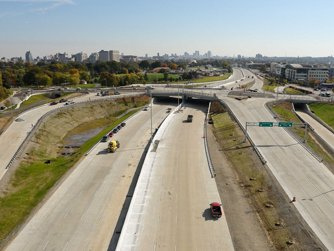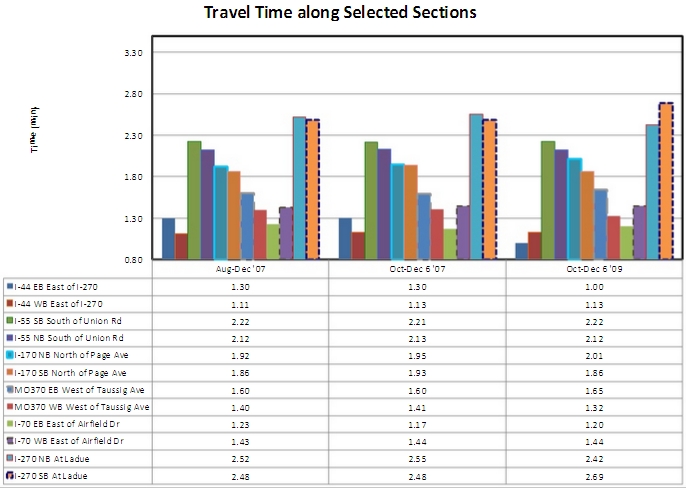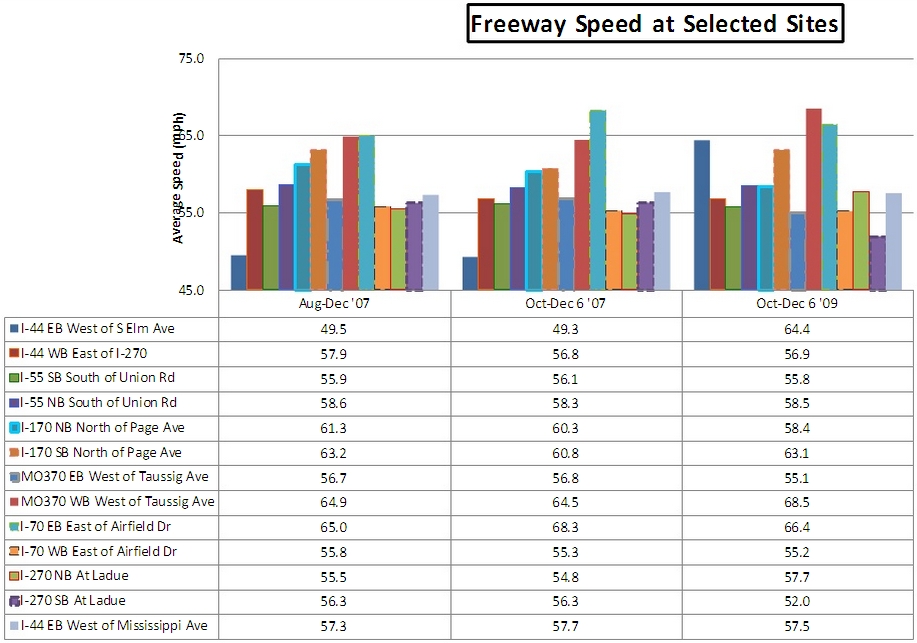 There's a looming funding crisis for Missouri roads. It's no surprise, but the issue is back in the spotlight as MoDOT Director Kevin Keith is publicly speaking about the need for additional revenue. St. Louis and Missouri have a serious problem. Our roads are crumbling and 29% of our bridges are "structurally deficient" or "functionally obsolete." The St. Charles Rock Road overpass is literally crumbling onto the highway beneath it and the Delmar Avenue I-170 overpass has been deemed unsafe and closed.
There's a looming funding crisis for Missouri roads. It's no surprise, but the issue is back in the spotlight as MoDOT Director Kevin Keith is publicly speaking about the need for additional revenue. St. Louis and Missouri have a serious problem. Our roads are crumbling and 29% of our bridges are "structurally deficient" or "functionally obsolete." The St. Charles Rock Road overpass is literally crumbling onto the highway beneath it and the Delmar Avenue I-170 overpass has been deemed unsafe and closed.
So what are we told is at the heart of the crisis? Funding for new road projects. We like new road projects more than maintaining what we have and MoDOT is warning that those new projects will grind to a halt without new money. In 2004, Missouri voters passed Amendment 3, allocating all revenue from vehicle sales and fuel tax to roads, and ending the practice of splitting that revenue between roads and the general fund. MoDOT has now maxed out the debt it can carry on the Amendment 3 bonds. Servicing that debt will cost $300M per year through 2020.
KMOV quotes MoDOT District Engineer Ed Hassinger as saying, "I think what we are in danger of is as bridges continue to deteriorate, we really don't have the money we've had in past years to keep up." In reality, we have not used the money in the past to keep up. We use it to build new, to increase the future maintenance burden on our state. This must stop. As a nation we spend more on new project and less of repairs than other nations, while at the same time public opinion says that maintaining current roads and bridges is most important.
For all the flourishing talk about modern transportation infrastructure being the lifeblood of economic growth, it hasn't worked in St. Louis. We simply cannot build enough highway miles to induce a robust economy. Supporters of added infrastructure are left with the argument that things would be worse without the nearly $6,000,000,000 spent on capital investment in MO from 2006-2010. That's an expensive argument, and one that entirely fails to identify a sustainable future by relying on an ever-growing region fueled by ever-growing highways. It's time to question the status quo and look for a new way forward.
The most basic argument made in favor of added infrastructure is congestion relief. In its report released yesterday, TRIP, a Washington D.C. base lobbying firm funded by highway and construction interests, makes the argument for more spending in St. Louis. According to TRIP, the average rush hour trip takes approximately 12 percent longer to complete than during nonrush hour. 12 percent. If your nonrush hour commute takes 20 minutes, your rush hour commute takes 22 minutes 24 seconds.
How much is that 2 minutes and 24 seconds worth and can we eliminate it if we spend billions more? The largest local project in recent years was the reconstruction of 10 miles of I-64 in central St. Louis County and City. The result? "We have twice as many people using I-64 now than we did three years ago," said MoDOT I-64 Project Director Lesley Hoffarth, three days after the new I-64 fully reopened. "Obviously everyone is trying out the new highway." At that time, traffic west of I-170 and east of Kingshighway were 95% and 110% above their pre-reconstruction peak respectively. At the same time, downtown St. Louis, ostensibly served by I-64 has not gained jobs and additional economic development has not mushroomed adjacent to the new highway. Other projects such as the $350M+ Page Avenue extension cannot be justified as having moved the needle on regional economic development.
Since the opening of the new I-64, Forest Park and MoDOT have struggled to keep cars moving at the Hampton Avenue exit and traffic grinds to a halt everyday at rush hour. Now the park is dedicating resources to a traffic "relief route," diverting visitors around the park and Metro has added shuttle busses to the park. This leads some to believe that spending $500M+ made no improvements, or in fact made things worse. This view is right and wrong. The new highway is very much improved, so much so that it can handle nearly twice the previous amount of traffic. However, to the user, the experience is the same, or worse. Why?
Induced demand. Traffic is largely self-regulating. One need to look no further than the I-64 project to understand this concept well. The central Interstate highway artery in a metropolitan region of 2.8M people was entirely closed in sections for two years. The result? Not gridlock, but instead, exactly what the Federal Highway Administration states happens when congestion becomes too great: To avoid the congestion, some travelers may have diverted to alternative routes, changed the time they make their trips, switched to different travel modes, traveled to other destinations, or decided not to make a particular trip at all.
Regarding the new I-64, it was immediately apparent while news helicopters searched in vain for predicted chaos on the day of closing, that other Interstate highways and City and County arterial and lesser roads were operating vastly under capacity. Tens of thousands of cars simply chose other routes and the system continued to work. In fact, it worked so well that MoDOT's Economic and Regional Mobility Study showed virtually no decrease in travel speed or travel time on regional Interstates and arterial roads post-closure.


The infrastructure debate must be framed properly. If we simply continue to ask if congestion is a problem, many, if not most will say "yes". If we ask, "Is it worth $500M to allow more cars to use I-64, while not materially reducing congestion?" the responses may shift. And if we go one step further and present transportation options and attach estimates for future congestion, anticipated maintenance, additional predicted expansion, and environmental costs resulting from additional vehicle miles traveled, we may approach some equity in transportation planning.
So Missouri and St. Louis may not be able to add lanes, build new interchanges and bridges. Beyond the unsubstantiated faith in "more is better", our ever expanding highway and road infrastructure has not secured an economically robust future for St. Louis. Even spending at a clearly unsustainable rate has not accomplished this. Perhaps it's time for another amendment at the ballot box. Let's demand that any available funds first be allocated to our existing deficient and crumbling infrastructure. In addition, it's time to examine how we can lessen future maintenance and expansion costs, potentially deconstructing redundant and unnecessary infrastructure. This cannot be accomplished by blindly committing ourselves to ever-expanding roads.


